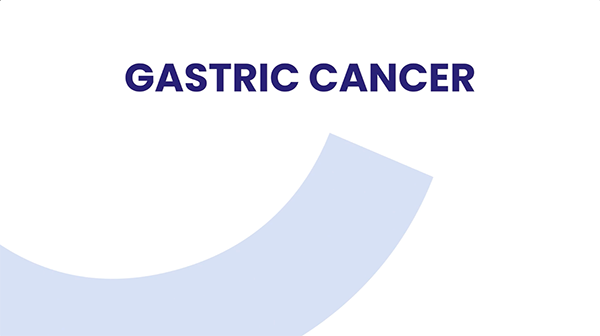Gastric cancer is associated with several environmental and behavioral risk factors. Due to its general, nonspecific symptoms, this type of cancer is often detected too late, resulting in a poor prognosis.
Also known as stomach cancer, gastric cancer is more prevalent in developing countries than industrialized ones. The most affected countries are in Asia (including China) and South America (mainly Chile, Peru, and Colombia), as well as Eastern Europe. An exception for industrialized countries is Japan1, which has a particularly high incidence of the disease. Sub-Saharan Africa, on the other hand, is relatively unaffected, with a lower incidence than Europe.
This distribution can be explained by the nature of the risk factors. The main risk factor is the presence of Helicobacter pylori (H. pylori) bacteria in the stomach; this is responsible for 80% of gastric cancers.2 This strain of bacteria is generally contracted in childhood and is the cause of chronic gastritis, an inflammation of the stomach lining that develops into cancer in 1% of people infected.3 Thanks to better hygiene practices, improved food preservation methods, and access to drinking water and antibiotics, the prevalence of H. pylori infection is diminishing.
Other identified risk factors include smoking, alcohol, inadequate fruit and vegetable intake, and a diet high in salt or including too much smoked meat and fish. In fact, high consumption of smoked products is believed to be the reason for the elevated incidence in Japan. Family history or genetic predisposition may also be associated with the disease. Like other cancers, the chances of survival increase with early diagnosis.
+ 1.92M
More than 1.92 million new cases occurred worldwide in 2022, making it the third most common cancer.4
≈900,000
Nearly 900,000 people died from gastric cancer in 2022, making it the second deadliest cancer in the world.5
3.6M
By 2050, gastric cancer could affect 3.6 million people.6

The stomach: The main digestive organ
The stomach performs two functions in the body.
Most stomach cancers (over 90%) are adenocarcinomas7 that occur in the stomach lining, the innermost layer where the acid- and enzyme-producing glands are located.
Cancer can affect the entire stomach. When it occurs in the upper two-thirds of the stomach (near the esophagus), the tumors are referred to as proximal. When it is in the lower third of the stomach, near the intestine, the tumors are called distal.
Early cancer detection
Gastrectomy, a major surgical procedure
Gastrectomy is a surgery which involves ablation of the stomach. It can be performed when:
Depending on the disease stage, the surgeon will remove all or part of the stomach (total or partial gastrectomy). The operation also involves restoring the continuity of the digestive tract when possible. Otherwise, it is necessary to perform a gastrostomy, which involves connecting an artificial feeding apparatus directly to the stomach from the outside, for nutritional support.
Chemotherapy to maximize the chances of survival
Chemotherapy, which is sometimes combined with radiotherapy, can be administered prior to the operation (preoperatively – or neoadjuvant) in order to reduce the size of the tumor so that it can be more easily removed. Preoperative chemotherapy treatment lasts between 2 and 3 months. As for postoperative chemotherapy, it is administered for a duration of 2 to 4 months. Its purpose is to reduce the risk of recurrence for high-risk patients by eliminating residual cancer cells. In the presence of metastases (secondary tumors), so-called palliative chemotherapy slows the progression of the disease and relieves symptoms linked to the tumor, improving quality of life.

About Servier
Guided by the needs of patients, we aim to bring therapeutic innovations to the development of treatments targeting hard-to-treat cancers. Specifically, these include digestive cancers (gastric cancer, pancreatic cancer, cholangiocarcinoma, or rare and aggressive biliary tract cancer), glioma (or brain tumors), hematological cancers (acute myeloid leukemia, acute lymphoblastic leukemia, lymphomas) or pediatric cancers.
We are focusing our R&D programs on two approaches: immuno-oncology and targeted therapies.
We have strengthened our cancer research ecosystem with Symphogen, our center of excellence for monoclonal antibodies in Denmark, and with our R&D center in Boston, USA. The latter center focuses its research activities on the development of innovative cancer treatments.
REMEMBER
1 – Globocan 2020, Centre international de recherche sur le cancer – OMS https://gco.iarc.fr/today/data/factsheets/cancers/7-Stomach-fact-sheet.pdf
2 – Institut national du cancer, octobre 2024https://www.e-cancer.fr/Patients-et-proches/Les-cancers/Cancer-de-l-estomac/Facteurs-de-risques
3 – Centre de lutte contre le cancer, octobre 2024 / https://www.cancer-environnement.fr/417-Cancer-de-lestomac.ce.aspx
4 – WHO, International Agency for Research on Cancer, October 2024 / Cancer Today / Absolute numbers, Mortality, Both sexes, in 2022
5 – WHO, International Agency for Research on Cancer, October 2024 / Cancer Today (iarc.fr)/ Absolute numbers Mortality, Both sexes, in 2022
6 – WHO, International Agency for Research on Cancer, October 2024 / Cancer Tomorrow (iarc.fr)/ Estimated number of new cases from 2022 to indefined, Males and Females, age 0-85+
7 – ALD n°30 – Guide médecin sur le cancer de l’estomac, HAS, décembre 2012/ https://www.has-sante.fr/jcms/c_1105137/fr/ald-n-30-cancer-de-l-estomac
